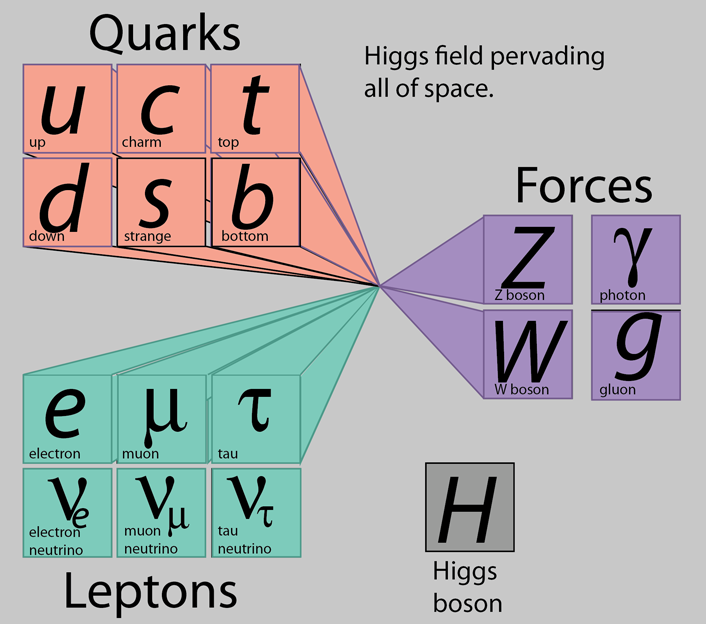Mass and its Relationship to the Higgs Field
The Standard Model of particle physics seeks to describe the electromagnetic, weak, and strong interactions of particles. At present, there is no comparable quantum mechanical treatment of gravity , the fourth fundamental force. The Standard Model describes the particles which are the building blocks of the universe including quarks (which make up protons and neutrons) and leptons (which include electrons) as well as force carrying particles which influence the quarks and leptons.
The structural particles are fermions with spin 1/2 whereas the force carrying particles are bosons with spin 1. With the discovery of the Higgs boson with spin 0 in 2012 the concept of the Higgs field pervading all of space received strong confirmation. Part of that concept is that mass at the most fundamental level comes from interaction with the Higgs field.
 Active graphic, click at any point
Active graphic, click at any pointThe diagram above uses extended structures to show those particles that interact directly with the Higgs field at an arbitrary point in the Higgs field. The Higgs field is constant throughout space so the resulting mass contribution is the same at any point. The photon and gluons are bosons that do not interact with the Higgs field and are considered to be massless vector bosons. The particles that do interact are given masses that are proportional to the strength of that interaction. The W and Z particles are the exchange particles associated with the nuclear weak interaction. They interact strongly with the Higgs field and therefore have large masses and short ranges. The extremely small neutrino mass suggests a very weak if non-zero interaction with the Higgs field.
Although all atoms and ordinary matter contain mass that arises from the interactions of their fundamental particles with the Higgs field, it is typically a small fraction of the mass. Electrons interact with the Higgs field and their mass energy is 0.511 MeV. The two up quarks and one down quark of the proton could be projected to a mass of around 10 MeV, and this compares to the actual proton mass energy of 938 MeV.
| The Path to the Higgs |
| The Atlas and CMS Experimental Detection |
| Particle Interactions in the Standard Model |
| The Higgs Field |
Ashry, Mustafa, Higgs Field and the Origin of Mass.
Fundamental force concepts
Higgs Vimeo
Higgs Vimeo
Atlas bulletin on Higgs
Higgs boson Wiki
| HyperPhysics***** Quantum Physics | R Nave |